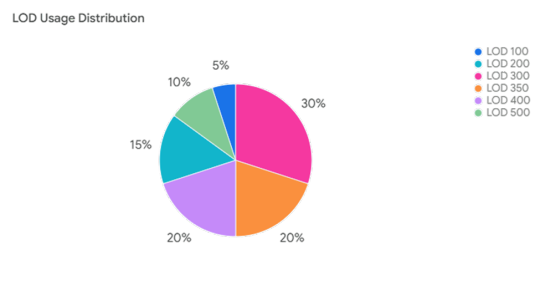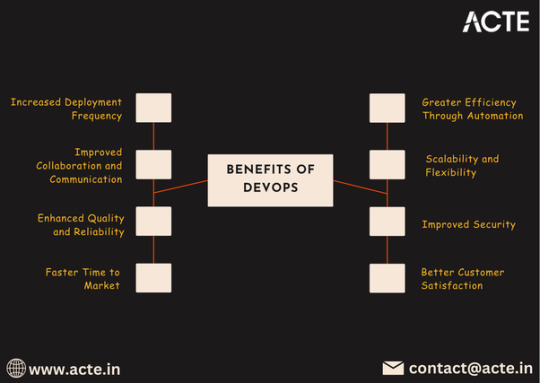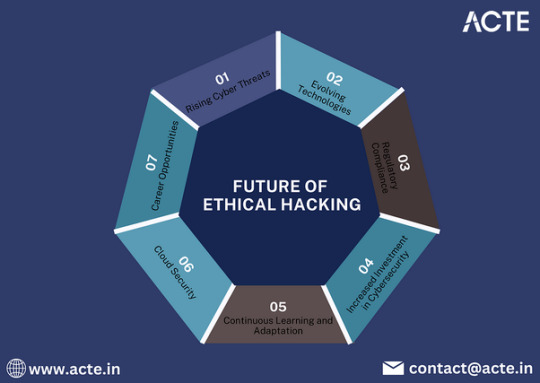#Embedded Systems Programming course in Pune
Explore tagged Tumblr posts
Text
Cracking the Code: Choosing the Right Embedded Systems Programming Course in Pune
Embarking on a journey to master Embedded Systems Programming in Pune is an exciting prospect, but with the multitude of courses available, choosing the right one can be daunting. This guide aims to break down the essentials of the Embedded Systems Programming course in Pune, helping you make an informed decision aligned with your career goals.
Understanding the Landscape:
Pune, a thriving tech hub, offers a diverse array of Embedded Systems Programming courses. Before diving into the options, it's crucial to understand the landscape. These courses typically cover a range of topics, including microcontrollers, real-time operating systems, and firmware development. Evaluate your current skill set and identify the specific areas you want to enhance.
Accreditation and Recognition:
The first checkpoint in your journey is to ensure the Embedded Systems Programming course in Pune holds accreditation and is recognized in the industry. Look for affiliations with reputable organizations, partnerships with tech companies, or endorsements from professionals. Recognized courses often carry more weight in the job market, contributing to your overall career prospects.
Curriculum Breakdown:
Delve into the curriculum of each course to ensure it aligns with your learning objectives. A comprehensive Embedded Systems Programming course in Pune should cover fundamental concepts, programming languages like C and Assembly, and practical applications in real-world projects. Pay attention to any specialization tracks offered, catering to your specific interests within the field.
Faculty Expertise:
The quality of instruction is paramount in any educational endeavor. Research the faculty members of each course, focusing on their industry experience, research contributions, and teaching methodologies. Courses led by seasoned professionals with a wealth of practical knowledge can significantly enhance your learning experience.
Hands-On Learning Opportunities:
Embedded Systems Programming is a practical field, and hands-on experience is invaluable. Opt for Embedded Systems Programming Classes in Pune that offer ample opportunities for hands-on learning, whether through lab sessions, projects, or internships. Practical exposure enhances your ability to apply theoretical knowledge in real-world scenarios, a crucial skill in the tech industry.
Industry Connections and Placement Support:
Explore the industry connections and placement support provided by the Embedded Systems Programming courses. A course that collaborates with leading tech companies, offers networking events, and provides placement assistance increases your chances of securing a desirable position post-graduation. Consider the course's track record in placing graduates in reputable organizations.
Flexibility and Mode of Delivery:
Assess the flexibility and mode of delivery of each Embedded Systems Programming course in Pune. Some courses may offer part-time or online options, catering to working professionals or those with scheduling constraints. Choose a format that aligns with your lifestyle and allows you to balance learning with other commitments.
Student Reviews and Testimonials:
Learn from the experiences of those who have walked the path before you. Seek out student reviews and testimonials for each Embedded Systems Programming course in Pune. Honest feedback from current or past students provides valuable insights into the course structure, faculty interactions, and overall satisfaction.
Cost and Financial Aid:
Consider the cost of the Embedded Systems Programming course and explore any available financial aid options. While quality education often comes with a price tag, weigh the benefits against the investment. Some courses may offer scholarships, installment plans, or partnerships with financial institutions to ease the financial burden.
Conclusion:
Choosing the right Embedded Systems Programming course in Pune is a pivotal step towards a successful career in the dynamic field of embedded systems. By carefully considering accreditation, curriculum, faculty expertise, hands-on learning opportunities, industry connections, flexibility, student reviews, and cost, you can make an informed decision that aligns with your career goals. Cracking the code to choose the right course is not just about learning Embedded Systems Programming; it's about laying the foundation for a rewarding and fulfilling professional journey. For more inclusive information on Embedded Programming, follow us at Envision Computer Training Institute Private Limited today!
0 notes
Text
#automotive embedded engineer#automotive engineer#embedded systems course#automotive industry#automotive embedded system course in pune#embedded programming#futureofai#neuailabs
0 notes
Text
Become an Embedded Systems Expert with Top-Rated Training at Technoscripts
The Embedded Training Program at Technoscripts is a comprehensive and immersive course designed to equip individuals with the essential skills and knowledge required to excel in the field of embedded systems. The program is 100% job-oriented, focusing on practical learning and real-world applications. It is available in both online and offline batches, making it accessible to students from all over the world.
The program is taught by industry experts with extensive experience in the field of embedded systems. They are passionate about sharing their knowledge with the next generation of embedded engineers and are committed to providing students with the best possible learning experience. The program covers a wide range of topics, including microcontrollers, digital signal processing, operating systems, and more.
One of the key features of the Embedded Training Program at Technoscripts is its emphasis on interview preparation. As part of the program, students will undergo intensive interview preparation sessions aimed at helping them land jobs in the embedded systems industry upon completion of the program. These sessions will include mock interviews, resume building workshops, and tips on how to effectively communicate technical concepts during interviews.
Throughout the program, students will participate in live projects, allowing them to apply their knowledge and gain valuable experience. These projects will expose students to real-world scenarios and enable them to demonstrate their problem-solving abilities. The program also includes regular assessments and feedback sessions, ensuring that students stay on track and make progress throughout the course.
In summary, the Embedded Training Program at Technoscripts is an exceptional opportunity for anyone looking to advance their career in the embedded systems industry. With a focus on practical learning and real-world applications, this program will provide students with the skills and knowledge needed to succeed in the rapidly evolving embedded systems industry. Its emphasis on interview preparation ensures that students are well-equipped to secure a job in the field upon completion of the program. So if you're ready to take your career to the next level, enroll in the Embedded Training Program at Technoscripts today!

#marketing#automotiveembeddedtestingcourse#automotiveembeddedsystemscourse#automotiveembeddedinstitute#automotiveembeddedcourse#python#machine learning#accounting#automotiveembeddedclasses#linux
2 notes
·
View notes
Text
Driving the Future: Why Automotive Embedded Systems Matter More Than Ever
The auto world has undergone a revolutionary change in the last decade. Those days are long gone when a vehicle used to be a mechanical contraption with some electronic accessories here and there. Now, your car is a sophisticated computer on wheels. But the question remains — what is behind this digital revolution? The answer is automotive embedded systems. Ever wondered how your car knows when to deploy airbags, regulate engine operations, or park itself? Is it magic, or is there a rational system to this?
Automotive embedded systems are purpose-built computer systems that take on limited tasks in a car. They’re “embedded” because they’re part of bigger mechanical or electrical systems used to run functions like braking, navigation, infotainment, and even autonomous driving. They’re the quiet behind-the-scenes workers that make your drive safer, smarter, and more efficient. Did you know that a single luxury vehicle these days can contain more than 100 microcontrollers managing these features?
Why Should You Care About Automotive Embedded Systems?
Think it’s just about electronics in a car? Think again. These systems do all the following:
Advanced Driver-Assistance Systems (ADAS) such as lane departure warnings and adaptive cruise control.
Infotainment systems provide real-time navigation, connectivity, and entertainment.
Powertrain control, which maximizes fuel efficiency and engine performance.
Safety mechanisms, such as automatic emergency braking and electronic stability control.
Doesn’t it sound like a combination of mechanical brilliance and computing excellence? Would you feel secure driving a new car without such systems installed?
A Booming Career Path: Why Learn Automotive Embedded Systems
If you’re a car nut who loves technology, a career in automotive embedded systems awaits. With the drive to electric vehicles (EVs), autonomous driving, and connected cars, the need for qualified engineers is on the rise. Industry reports say that it is becoming increasingly difficult for companies to source professionals with knowledge of both automotive concepts and embedded technology. Could you be the solution to that problem?
Do you possess electronics, computer science, or mechanical engineering background? Are you familiar with C programming as well as real-time operating systems? Yes, then you’re already halfway towards becoming an automotive embedded developer. Is that thrilling?
What Do You Learn from an Automotive Embedded Course in Pune with Placement?
An embedded car course is not a coding crash course. It’s a well-structured industry-relevant course that fills the gap between theoretical learning and practical application. Curious about what such a course may provide?
Microcontroller programming: Understand how to program in-demand MCUs like ARM Cortex or Infineon Tricore.
CAN protocol: Learn about the communication backbone of vehicle electronics. Did you ever wonder how modules in your vehicle communicate with each other?
Real-Time Operating Systems (RTOS): Know how to handle timing-critical programs.
Automotive standards: Familiarize yourself with AUTOSAR, ISO 26262 (functional safety), and ASPICE.
Would you like to learn by doing instead of theory lectures? Good courses usually provide lab simulation, real-time debugging practices, and project-based testing to make sure you know how to design and test systems that would be put in a car in real life.
Who Should Enroll?
Can’t decide if you should take this course? Ask yourself:
Are you a graduate or student in engineering wanting to specialize in a niche skill?
Are you an embedded working professional seeking specialization?
Are you excited about future mobility and automotive innovations?
If the answer is yes to any of these, then you are the ideal candidate for this experience. Why delay when the mobility of the future is being created today?
What’s the Career Outlook?
Based on industry analysis, the global market for automotive embedded systems is projected to exceed $17 billion by 2027. Bosch, Continental, Tesla, and Toyota are just a few of the companies actively recruiting embedded developers. Do you want to contribute to the next generation of electric or autonomous cars? Can you envision helping create the safety system that saves lives daily?
You might be:
Embedded Software Developer
Automotive System Engineer
ADAS Engineer
Firmware Developer And these positions are not exclusive to OEMs. Tier-1 suppliers, technology majors, and even startups are always on the lookout for automotive embedded talent.
The world of car embedded systems is not only about vehicles — it’s about innovation, influence, and endless possibilities. With the right program, focus, and interest, you can drive the future of mobility. Wouldn’t it be exciting to witness your efforts materialize in a vehicle on the road?
So, are you prepared to change gears and propel your career with Embedded Courses in Pune with Placement.
0 notes
Text
B.Tech in Electronics and Communication Engineering: A Comprehensive Guide for Aspiring Engineers
Are you passionate about technology, communication systems, and electronics? A Bachelor of Technology (B.Tech) in Electronics and Communication Engineering (ECE) offers a dynamic and future-ready career path. This program integrates core principles of electronics with modern communication technologies, preparing students for diverse roles in today's tech-driven world.
Understanding Electronics and Communication Engineering
Electronics and Communication Engineering is a discipline that combines electronic engineering with computer science and information technology. It focuses on designing, developing, and testing electronic circuits, devices, and communication equipment like transmitters, receivers, and integrated circuits. This field is pivotal in the advancement of technologies such as mobile phones, satellite systems, and the Internet of Things (IoT).
Course Structure and Curriculum
The B.Tech ECE program typically spans four years, divided into eight semesters. The curriculum is designed to provide a strong foundation in both theoretical and practical aspects of electronics and communication.
Core Subjects:
Digital Electronics
Analog Circuits
Signals and Systems
Electromagnetic Field Theory
Microprocessors and Microcontrollers
Communication Systems
VLSI Design
Embedded Systems
Wireless Communication
Optical Communication
Laboratory Work:
Hands-on experience is a crucial part of the program, with labs focusing on circuit design, signal processing, microprocessor programming, and communication systems.
Electives and Specializations:
Students can choose electives in areas like:
Artificial Intelligence and Machine Learning
Internet of Things (IoT)
Robotics
Nanotechnology
Biomedical Engineering
Eligibility and Admission Process
To enroll in a B.Tech ECE program, candidates must meet the following criteria:
Educational Qualification: Completion of 10+2 with Physics, Chemistry, and Mathematics as core subjects.
Minimum Marks: A minimum aggregate score of 50-60% in the qualifying examination (may vary by institution).
Entrance Exams: Qualifying scores in entrance exams like JEE Main, state-level CETs, or institution-specific tests.
Career Opportunities After B.Tech ECE
Graduates of ECE have a plethora of career options across various industries.
Job Roles:
Electronics Engineer
Communication Engineer
Embedded Systems Developer
Network Engineer
VLSI Design Engineer
IoT Developer
RF Engineer
R&D Engineer
Industries:
Telecommunications
Consumer Electronics
Automotive
Aerospace
Healthcare Technology
Defense and Military
Information Technology
Higher Studies:
Graduates can pursue M.Tech, MBA, or research programs in specialized fields to enhance their knowledge and career prospects.
Top Electronics and Communication Engineering Colleges in Pune
Pune is home to several esteemed institutions offering B.Tech in ECE:
DES Pune University
MIT World Peace University (MIT-WPU)
Vishwakarma Institute of Information Technology
Dr. D. Y. Patil Institute of Technology
Bharati Vidyapeeth Deemed University College of Engineering
PES Modern College of Engineering
These colleges are known for their robust curriculum, experienced faculty, and excellent placement records.
Why Choose DES Pune University for B.Tech ECE?
At DES Pune University, the B.Tech in Electronics and Communication Engineering program is meticulously designed to align with industry standards and technological advancements. The university offers:
Comprehensive Curriculum: Integrating core ECE subjects with emerging technologies.
State-of-the-Art Laboratories: Equipped with modern tools and equipment for practical learning.
Experienced Faculty: A team of dedicated educators and industry professionals.
Industry Collaborations: Partnerships with leading companies for internships and projects.
Placement Support: Dedicated cell to assist students in securing employment opportunities.
Choosing DES Pune University ensures a holistic education experience, preparing students to excel in the ever-evolving field of electronics and communication engineering.
Embark on a journey of innovation and technology with a B.Tech in Electronics and Communication Engineering. Equip yourself with the skills and knowledge to shape the future of communication and electronic systems.
0 notes
Text
How LOD in BIM Improves Design, Collaboration, and Construction Efficiency
In the world of Building Information Modeling (BIM), LOD, or Level of Development, plays a crucial role in shaping the accuracy, usability, and lifecycle performance of a building model. It helps define how much detail a model should have at each stage of the construction process, from early design to final handover.
Whether you're a designer, contractor, or facility manager, understanding how LOD in BIM works ensures that everyone is on the same page about what to expect in the model. This reduces confusion, saves time, and supports better project outcomes.
Let’s dive into what LOD really means and how it influences decision-making throughout the construction journey.
What is LOD in BIM?
LOD (Level of Development) defines the degree of detail and accuracy embedded in a BIM model element at different phases of a project. It ensures all stakeholders—from architects to MEP engineers—are aligned on the scope and maturity of information being shared.
The American Institute of Architects (AIA) defines LOD as a scale from 100 to 500. As the number increases, so does the detail and reliability of the model element.
LOD Stages in BIM (LOD 100 to LOD 500)

Pie Chart: LOD Usage Distribution Across a Typical BIM Project


Why LOD Matters in BIM Modeling:
Clarity for Stakeholders Everyone knows what to expect at each design stage.
Improved Coordination Minimizes clashes and rework by ensuring details are added progressively.
Cost and Time Efficiency Helps allocate resources only when needed—no over-modeling or under-modeling.
Facility Management Ready LOD 500 enables asset tracking and long-term operations planning.
LOD Application in an MEP BIM Model:
In an MEP (Mechanical, Electrical, Plumbing) project for a hospital in Pune, LOD was applied progressively:
LOD 100–200 during conceptual and design approvals.
LOD 300–350 for construction coordination.
LOD 400 for shop drawings and fabrication.
LOD 500 post-construction, integrated with facility maintenance systems.
Conclusion:
Choosing the correct LOD in BIM is more than just a technical choice—it's a strategic decision. Over-modeling leads to wasted resources, while under-modeling creates confusion and costly rework. A well-planned LOD roadmap brings clarity, accuracy, and efficiency to every construction project.
For professionals seeking to master BIM and its applications, BIM Mantra Academy in Pune offers specialized training programs. Their Master's courses in BIM, Revit Architecture, Civil 3D, and GIS are designed to equip AEC professionals with practical skills through hands-on experience and real-world projects. With options for both online and offline sessions, BIM Mantra Academy ensures flexible learning tailored to individual needs.
0 notes
Text
Your Guide to M.Tech Engineering: Studies, Fields & Jobs

The M.Tech, or Master of Technology, is a postgraduate degree that is supposed to equip engineers with higher technical knowledge and specialised skills in various engineering domains. As technology develops at breakneck speed, pursuing an M.Tech engineering is becoming increasingly vital for those wishing to deepen their expertise in artificial intelligence, data science, or cybersecurity. This article will provide an all-inclusive overview of M.Tech courses, specialisations, and the career prospects awaiting graduates in this dynamic field.
Overview of M.Tech Engineering
This degree program usually involves two years and consists of coursework and research. The nature of the study is such that it provides much theoretical knowledge coupled with practical engagements through projects in the laboratory environment. M.Tech eligibility for entry usually mandates a B.Tech or B.E. award in a pertinent field, typically requiring competitive entrances, such as the Graduate Aptitude Test in Engineering and entrance tests tailored to specific institutions.
Courses for M.Tech Engineering
The M.Tech programs expose students to a mixture of core subjects vital to engineering, including Advanced Engineering Mathematics, Digital Systems, Engineering Mechanics, and a significant number of electives. These help students explore particular interests within the specialities, such as Embedded Systems, Data Mining, or Renewable Energy Technologies. A crucial component of the M.Tech experience is project work or thesis, where students carry out original research, developing practical skills and a deepened understanding of their specific field.
Specialisations in M.Tech
Specialisation may significantly determine graduates' careers. Some of the most recent popular specialisations include Computer Science and Engineering, Information Technology, Communication Engineering, Structural Engineering, VLSI Design, Power Systems, Data Science and analytics, Cybersecurity, and Machine Learning and AI.
Admission Process for M.Tech
The admission process for M.Tech programs is competitive, often requiring candidates to score well on entrance exams like GATE. Preparation strategies include detailed study of core concepts in engineering, previous years' papers, and enrolling in coaching courses if necessary. Most of the time, the application process involves sending academic records, entrance exam scores, and sometimes personal statements to the institutions of interest. Candidates have to keep tabs on major timelines like the examination dates and deadlines for filling out the applications so they don't miss out.
Career Scope after M.Tech
Many graduates find employment easily in various industries like IT, manufacturing, construction, and R&D. Typically, M. Tech graduates often find employment in roles such as software developers, project managers, research scientists, and data analysts. Many multinationals also hire M.Tech students. Besides, with the M. Tech degree comes an opportunity to pursue higher education at a PhD level, which results in a full-time research-based career. Starting salaries vary a lot, but as of the recent trends, they usually range between INR 6-15 lakhs per annum, with good scope for growth in pay as the experience increases.
Conclusion
To summarise, M.Tech is an excellent opportunity for students to acquire knowledge and career opportunities in various engineering fields. A student with the right specialisation, practical experience, and skill set can advance in his or her career by many folds. If you are considering your next educational step, look into engineering colleges in Pune could be a promising path. Do share your thoughts or experiences about M.Tech studies; we would love to hear from you!
1 note
·
View note
Text
Java: A Deep Dive into Its Applications and Uses
Java: A Deep Dive into Its Applications and Uses
Java is one of the most widely used programming languages in the world, known for its portability, scalability, and versatility. Initially designed for embedded systems and small devices, Java has grown to become the backbone of numerous applications across different industries. This blog explores the various applications and uses of Java, highlighting why it remains a top choice for developers worldwide. Enrolling in a Java Course in Pune significantly enhances one’s ability to leverage Java’s capabilities effectively.

1. Web Development
Java is extensively used in web development, particularly for building dynamic, large-scale websites and web applications. Frameworks like Spring, Struts, and JSF (JavaServer Faces) are popular choices for building robust, secure, and scalable web applications. Java's platform independence and its ability to handle large volumes of data make it perfect for enterprise-level web applications.
Java allows developers to build everything from basic e-commerce websites to complex content management systems and social media platforms. Using Java for web development ensures that your application can run on any operating system, offering both flexibility and convenience.
2. Mobile Applications (Android)
Java is the primary language for developing Android apps, making it a critical tool for mobile app developers. With Android being the most widely used mobile operating system globally, the demand for skilled Java developers in the mobile development space is consistently high.
The Android SDK (Software Development Kit) is built around Java, and most Android apps are written in Java or Kotlin (which is interoperable with Java). Whether you're building a simple mobile app or a feature-rich enterprise mobile solution, Java provides the foundation for developing high-performance, scalable Android applications.
3. Enterprise Applications
Java has long been the go-to language for large-scale enterprise applications. Its scalability, reliability, and security make it a perfect fit for building complex systems like Customer Relationship Management (CRM) software, Enterprise Resource Planning (ERP) systems, financial applications, and more.
The Spring framework is widely used for creating enterprise-level applications in Java, offering tools for dependency injection, transaction management, and security. Additionally, Java’s compatibility with other enterprise tools and databases, such as Oracle and MySQL, enhances its appeal in the business world.
4. Big Data Technologies
In the world of big data, Java plays a crucial role. Its ability to handle large datasets and its high-performance capabilities make it an ideal language for developing big data applications. Java is the language of choice for working with popular big data technologies like Apache Hadoop and Apache Spark. These frameworks are used for processing and analyzing massive amounts of data, and they leverage Java for writing jobs, handling data processing tasks, and managing cluster environments.
Java’s robust ecosystem and tools also make it easier to implement machine learning algorithms and integrate with other data processing technologies, making it a key player in the data science and analytics industries.
5. Cloud-Based Applications
The rise of cloud computing has further solidified Java's importance in modern software development. Java offers powerful tools for building cloud-based applications that can run on popular cloud platforms like Amazon Web Services (AWS), Microsoft Azure, and Google Cloud Platform (GCP). Java’s scalability, reliability, and secure environment make it well-suited for developing applications that need to be deployed on the cloud. Consider enrolling in the Java Online Certification Training to fully harness Java’s capabilities and become proficient in web automation.

Java also integrates well with cloud-native technologies such as Docker and Kubernetes, allowing developers to build microservices and containerized applications. With Java, developers can create scalable, distributed systems that can grow with the demands of modern businesses.
6. Embedded Systems and IoT
Java’s versatility extends beyond traditional computing to embedded systems and Internet of Things (IoT) devices. While other languages like C or C++ are often used for low-level programming, Java’s portability and ease of use make it a great choice for embedded systems, especially when you need to scale or interface with other technologies.
Java provides frameworks such as Java ME Embedded and JavaFX for building IoT applications, allowing developers to create solutions that work on a wide variety of connected devices. Java’s platform independence makes it ideal for IoT environments, where devices from various manufacturers need to work together seamlessly.
7. Financial Services and Trading Systems
Java has a long history of being used in the financial industry. Its robustness, security features, and ability to handle complex calculations make it an excellent choice for developing trading platforms, risk management systems, and financial analytics tools. Java’s stability and reliability are critical in the finance sector, where downtime can result in significant losses.
Java’s real-time processing capabilities also make it suitable for developing high-frequency trading systems, where milliseconds can make the difference. Additionally, its vast ecosystem of libraries and frameworks supports secure transactions and integrations with banking systems, making it indispensable for the financial services industry.
8. Scientific and Research Applications
Java’s ability to handle complex mathematical calculations, along with its stability, has made it a popular language in scientific computing. Whether it’s used for data analysis, simulation, or modeling, Java provides a reliable foundation for building applications that require high precision and performance.
Java is used in fields such as bioinformatics, physics simulations, and weather modeling. Its object-oriented design makes it easier to manage and structure the complex data involved in scientific research, while its wide range of available libraries supports various scientific computations.
9. Game Development
Although not as widely known for game development as languages like C++ or C#, Java is still a powerful language for building 2D and 3D games. Its portability, ease of use, and wide array of libraries make it suitable for developing both desktop and mobile games.
The LibGDX framework, for example, allows developers to create cross-platform games using Java. Game engines built on Java also allow developers to take advantage of Java's object-oriented features, making it easier to structure complex game logic and interactions.
10. Artificial Intelligence and Machine Learning
In recent years, Java has also become a popular choice for developing artificial intelligence (AI) and machine learning (ML) applications. Libraries like Deeplearning4j, Weka, and MOA are widely used for building intelligent systems, from neural networks to natural language processing (NLP) and computer vision.
Java's performance, scalability, and large ecosystem make it an ideal candidate for developing AI/ML applications that need to process large datasets or run in production environments. Additionally, Java's integration with other big data and cloud technologies enhances its capabilities in the AI and ML domains.
Conclusion
Java's versatility and robustness have made it a cornerstone of modern software development. From web applications and mobile development to cloud solutions, big data, and embedded systems, Java plays a vital role in numerous industries. Its cross-platform capabilities, scalability, security features, and extensive libraries ensure that Java remains a powerful choice for developers. Whether you're working on a small project or a large enterprise system, Java provides the tools and features needed to build scalable, reliable, and secure applications.
1 note
·
View note
Text
What is Oracle Java SE? Everything You Need to Know
Oracle Java SE, or Java Standard Edition, is a platform provided by Oracle Corporation that forms the backbone of many software applications. Known for its portability and versatility, Java SE offers developers the tools, libraries, and runtime environment needed to create powerful cross-platform applications. Its “write once, run anywhere” philosophy enables applications developed in Java to function seamlessly across various operating systems, making it a preferred choice for both desktop and server-side applications.
Java SE is commonly used for building desktop applications, backend server solutions, and embedded devices. Key components include the Java Runtime Environment (JRE), which allows Java programs to run on different devices, and the Java Development Kit (JDK), which includes tools and libraries necessary for developers to build and test Java applications.
Learn in detail about the Oracle Java se by visiting our blog — https://www.itview.in/blog/what-is-oracle-java-se
If you’re looking to build a career in Java development, mastering Java SE is essential. For those in Pune looking for expert training, ITView offers top-rated Java courses in Pune. Their comprehensive curriculum covers Java fundamentals to advanced concepts, with hands-on projects to help you gain real-world experience.
Ready to start your Java journey? Join ITView’s Java courses in Pune and gain the skills needed to succeed in today’s competitive tech landscape! Learn more about ITView’s Java courses here!
0 notes
Text
Why DevOps is Essential for Modern Software Development
In today's fast-paced digital landscape, the demand for rapid and reliable software delivery has never been greater. As organizations strive to innovate and stay ahead of the competition, traditional software development approaches often fall short. This is where DevOps comes into play. By merging development and operations, DevOps has become essential for modern software development. Here are several reasons why adopting DevOps practices is crucial for organizations today.
For those keen to excel in Devops, enrolling in Devops Course in Pune can be highly advantageous. Such a program provides a unique opportunity to acquire comprehensive knowledge and practical skills crucial for mastering Devops.

1. Accelerated Delivery Cycles
One of the most compelling reasons to adopt DevOps is the ability to accelerate delivery cycles. With the integration of continuous integration and continuous deployment (CI/CD) practices, teams can automate code testing and deployment, significantly reducing the time it takes to move from development to production. This speed allows organizations to respond to market changes and customer feedback more swiftly, ensuring they remain competitive.
2. Enhanced Collaboration
DevOps fosters a culture of collaboration between development, operations, and other stakeholders. By breaking down silos, teams can work together more effectively, sharing knowledge and resources. This collaborative environment not only improves communication but also leads to a more unified approach to achieving business objectives, ultimately driving innovation.
3. Improved Quality and Reliability
Incorporating automated testing into the DevOps pipeline allows for continuous quality assurance throughout the development process. By identifying and fixing issues early, organizations can deliver more reliable software. This proactive approach minimizes the risk of defects reaching production, leading to a better user experience and higher customer satisfaction.
4. Scalability and Flexibility
DevOps practices enable organizations to scale their operations efficiently. Whether it’s handling increased traffic or adapting to new business requirements, DevOps provides the flexibility to adjust resources accordingly. This scalability is essential for modern applications that demand rapid adjustments to meet user needs.
5. Faster Issue Resolution
When issues arise, the collaborative nature of DevOps allows teams to respond quickly. With shared responsibilities and streamlined communication, teams can diagnose problems faster and implement solutions more efficiently. This agility reduces downtime and enhances overall system reliability, which is critical for maintaining customer trust.

Enrolling in Devops Online Course can enable individuals to unlock DevOps full potential and develop a deeper understanding of its complexities.
6. Increased Efficiency Through Automation
Automation is a key component of DevOps. By automating repetitive tasks such as testing, deployment, and infrastructure management, teams can focus more on strategic initiatives and innovation. This increased efficiency not only boosts productivity but also reduces the likelihood of human error, leading to more consistent outcomes.
7. Better Resource Utilization
DevOps encourages organizations to optimize their resource usage. By implementing practices such as infrastructure as code (IaC), teams can manage infrastructure more effectively, ensuring resources are allocated where they are needed most. This not only improves performance but also leads to cost savings.
8. Enhanced Security Practices
With the rise of cyber threats, incorporating security into the DevOps process—often referred to as DevSecOps—is increasingly important. By embedding security measures throughout the development lifecycle, organizations can identify vulnerabilities early and mitigate risks more effectively. This proactive approach fosters a culture of security awareness among all team members.
Conclusion
In an era where agility and speed are paramount, DevOps has become essential for modern software development. By fostering collaboration, enhancing quality, and enabling faster delivery cycles, organizations can not only meet but exceed customer expectations.
As the digital landscape continues to evolve, embracing DevOps practices is not just a competitive advantage; it is a necessity for success in today’s dynamic market. By committing to a DevOps culture, organizations can unlock their full potential and thrive in the face of challenges.
0 notes
Text
Why Ethical Hacking is Essential for Tomorrow's Cybersecurity
As we advance further into the digital age, the landscape of cybersecurity is evolving at an unprecedented pace. Organizations are increasingly exposed to a variety of cyber threats, making the role of ethical hacking more critical than ever. Here’s why ethical hacking is not just beneficial but essential for the future of cybersecurity.
For individuals seeking to validate their proficiency in Ethical Hacking practices and enhance their career prospects, pursuing the Best Ethical Hacking Course in Pune becomes a strategic imperative. Let’s embark on an exploration into the transformative realm of hacking.

1. Proactive Defense Against Cyber Threats
In a world where cyberattacks are becoming more sophisticated and frequent, a proactive approach to security is essential. Ethical hackers simulate attacks to identify vulnerabilities before malicious hackers can exploit them. This proactive stance helps organizations strengthen their defenses and mitigate risks effectively.
2. Evolving Threat Landscape
With the rapid development of technology, the threat landscape is constantly changing. New vulnerabilities emerge with each innovation, whether it’s cloud computing, IoT devices, or AI systems. Ethical hackers are crucial in understanding these threats and adapting security measures accordingly, ensuring that organizations remain one step ahead of cybercriminals.
3. Regulatory Compliance and Risk Management
As governments and regulatory bodies impose stricter data protection laws, compliance has become a significant concern for businesses. Ethical hackers help organizations meet these regulatory requirements by conducting audits, penetration tests, and risk assessments. This not only protects sensitive data but also avoids hefty fines associated with non-compliance.
4. Building a Security Culture
Embedding a culture of security within an organization is vital for long-term success. Ethical hackers contribute to this culture by educating employees about potential threats, safe practices, and the importance of cybersecurity. This awareness can significantly reduce the risk of human error, which is often the weakest link in cybersecurity.

For those looking to excel in Ethical hacking, Ethical Hacking Online Training is highly suggested. Look for classes that align with your preferred programming language and learning approach.
5. Cost-Effective Security Solutions
Investing in ethical hacking can be a cost-effective strategy for organizations. By identifying vulnerabilities before they are exploited, businesses can avoid costly data breaches, legal issues, and reputational damage. The return on investment from ethical hacking is substantial, making it a wise financial decision for organizations of all sizes.
6. Enhancing Incident Response
In the event of a cyber incident, having ethical hackers on board can enhance an organization’s incident response capabilities. Their expertise allows for quicker identification of the breach's nature and scope, leading to more effective containment and remediation strategies. This agility is crucial in minimizing damage and restoring operations swiftly.
7. Advancements in Cybersecurity Technologies
As cybersecurity technologies evolve, so do the techniques used by ethical hackers. From automated penetration testing tools to advanced threat intelligence platforms, ethical hackers leverage the latest technologies to enhance security measures. Their ability to adapt to new tools and methodologies ensures that organizations are utilizing the best practices available.
8. Career Opportunities and Skill Development
The rise of ethical hacking has created a wealth of career opportunities in the cybersecurity field. As demand for skilled professionals continues to grow, individuals pursuing careers in ethical hacking can expect a rewarding and impactful profession. Continuous education and skill development in this area are essential, fostering a new generation of cybersecurity experts.
Conclusion
The future of cybersecurity hinges on the effectiveness of ethical hacking. As cyber threats continue to evolve, organizations must adopt proactive strategies to safeguard their assets. Ethical hackers play a pivotal role in this endeavor, helping to identify vulnerabilities, ensure compliance, and foster a culture of security.
By embracing ethical hacking as an integral part of their cybersecurity strategy, organizations can better prepare themselves for the challenges of tomorrow’s digital landscape.
0 notes
Text
Advance Your Tech Skills with Embedded Systems Training
The right foundation can set you apart in tech fields. Enrolling in an embedded systems course in pune allows you to build critical knowledge in microcontrollers, C programming, and circuit design. What makes Envision Computer Training Institute Private Limited unique is its focus on real-world applications through labs and live projects. It's an excellent opportunity for engineering students and working professionals who want a solid practical base. Dive into embedded systems with expert guidance and job-ready training.
0 notes
Text
Cutting-Edge Embedded Course for Tech Enthusiasts
Explore the frontier of technology with our embedded course, designed to delve deep into the intricate workings of hardware-software integration. Master the art of programming embedded systems to unlock limitless possibilities in robotics, IoT, and beyond.
#embedded system course#embedded course#embedded programming#automotive engineer#automotive industry#automotive embedded engineering#automotive embedded systems#automotive embedded system course in pune#neuailabs#futureofai
0 notes
Text
Mastering Embedded Systems: Training with Embedded Box
At Embedded Box, our embedded training program is all about empowering you with the practical skills you need to succeed in the world of embedded systems. Whether you're just starting out or looking to enhance your expertise, our hands-on approach ensures you'll gain valuable experience that you can apply right away.
Our experienced instructors are here to guide you every step of the way, making sure you understand the ins and outs of embedded programming, hardware design, and system integration. We focus on real-world applications, so you'll be ready to tackle any challenge that comes your way.
Plus, our flexible learning options mean you can study on your own schedule, whether that's full-time or part-time, in-person or online. No matter how you prefer to learn, we'll work with you to make sure you get the most out of your training.
By the time you complete our embedded training program, you'll be well-prepared to take on exciting opportunities in a variety of industries. Join us at Embedded Box and let's get started on your journey to mastering embedded technology.

#automotiveembeddedsystemscourse#automotiveembeddedtestingcourse#automotiveembeddedinstitute#automotiveembeddedcourse#marketing#machine learning#accounting#automotiveembeddedclasses#linux#python
2 notes
·
View notes
Text
Embedded Systems Course in Pune with Placement
If you’re in Pune and serious about a career in embedded systems or IoT, there’s a good chance you’ve heard the name Technoscripts. Since 2007, this institute has helped thousands of students and professionals move beyond theory and into real embedded jobs. Whether you’re a fresher aiming to break into the core electronics field or someone looking to switch domains, Technoscripts has built a reputation for being one of the most reliable places to start that journey.
Let’s take a closer look at what makes this place different — and why so many students recommend it.
A Strong Foundation in Embedded Systems Training
Technoscripts didn’t just pop up recently. It’s been around for over 18 years, which means they’ve seen the industry change and evolve — and they’ve updated their training along with it. From basic microcontroller programming to more advanced topics like RTOS, device drivers, and IoT, their curriculum is built to match what companies are actually looking for.
The institute runs its classes in Shivaji Nagar, Pune, and offers both online and offline batches. So whether you’re a college student, a working professional, or someone in between, you can find a batch that fits your schedule.
Learning by Doing — The Practical Approach
One of the biggest reasons students choose Technoscripts is the hands-on learning. Here, you won’t just be sitting through theory lectures. You’ll get your hands dirty — working with sensors, microcontrollers, and various protocols like UART and I2C.
Each course includes at least two live projects, which gives you actual project experience. These aren’t just dummy projects either — they’re built to mimic what engineers work on in the real world. That experience becomes a big plus when you start applying for jobs.
And because the batches are small, you get personal attention. Trainers are not just teaching from slides — they’ve worked in the industry and know how things really work. Students often say the trainers are supportive, clear with concepts, and genuinely interested in helping you learn.
Course Options That Fit Different Goals
Whether you’re just starting out or looking to specialize, Technoscripts has courses for every level.
Embedded Systems Course in Pune with Placement — This is their flagship course. It runs for about 4 months and covers everything from C programming and 8051 microcontrollers to ARM, PIC, and wireless technologies. It’s designed to get you job-ready.
IoT Training — One of the first IoT-focused courses in India, this one teaches you how to build smart, connected devices. It’s ideal if you want to get into future-focused tech.
Automotive Embedded, MATLAB, and AUTOSAR — These are great if you’re targeting specific sectors or want to move into niche roles.
Post Graduate Diploma in Embedded Systems — Perfect for beginners, this course gives you a solid foundation and gradually builds up your skills with lab-based learning.
Solid Placement Support That Actually Works
A lot of institutes say they offer placements. Technoscripts actually delivers. Their placement team is active, always coordinating interviews, helping with resumes, and preparing students with mock interviews and soft skills sessions.
They have ties with several companies, from big MNCs to core embedded startups. That means more chances for students to land roles that actually match their training. You’ll find Technoscripts students placed in companies working on automotive, medical, and industrial applications.
The feedback is consistent — students who put in the effort get placed.
“I got placed in Spark as an Embedded Developer. The training was hands-on and the support from the placement team was excellent,” says one student.
“Technoscripts is the best training institute in Pune. I got placed in a good company and learned so much through practical projects,” says another.
Industry Exposure and Certifications That Matter
Technoscripts doesn’t operate in a vacuum. They keep their training relevant by partnering with companies, organizing guest lectures, and even arranging internships and industry visits.
They also provide NASSCOM®-certified training, which adds weight to your resume and helps during hiring processes.
Their courses are regularly updated to include trending technologies like STM32 microcontrollers, Embedded Linux, and IoT protocols, so you’re not learning outdated stuff.
Flexible Learning Options for All Schedules
Not everyone has the same timetable. That’s why Technoscripts offers:
Regular batches
Fast-track programs
Weekend classes
Early morning & evening options
Live online training with project kits
Even if you’re working full-time, you can still attend and learn at your pace.
A Supportive, Student-First Atmosphere
Beyond the tech and tools, what really makes Technoscripts stand out is its student-friendly environment. The faculty is approachable, and the vibe is encouraging. They even host webinars, meetups, and project expos to keep the energy going.
One student said it best:
“The atmosphere here is very healthy. There are regular live projects, webinars, and opportunities to apply what you learn.”
A Few Areas to Improve — And They’re Listening
Like any place, Technoscripts isn’t perfect. Some students have said they’d like even more extracurricular activities or career-focused workshops. The good part? The institute listens. They’ve been adding more events and soft skills sessions over time to give students a well-rounded experience.
Final Thoughts
Technoscripts Embedded Institute isn’t just about teaching you how to blink an LED. It’s about building a career in embedded systems, step by step — with practical skills, real projects, and strong placement backing.
Whether you’re looking for your first core job, planning to switch domains, or just want to build something real, Technoscripts can be your launchpad.
If you’re serious about embedded systems, this is a great place to start.
0 notes
Text
CPP Programming Classes at Sunbeam Institute Pune
Enhance your programming skills with CPP Programming Classes at Sunbeam Institute Pune. Gain expertise in object-oriented programming, data structures, algorithms, and advanced C++ concepts. With industry-expert instructors, real-world projects, and 100% placement assistance, Sunbeam Institute ensures you are well-prepared for a successful career in software development.
Why Choose Sunbeam Institute for CPP Programming?
Expert trainers with hands-on industry experience.
Comprehensive syllabus covering OOP concepts, data structures, and memory management.
Live coding sessions to sharpen problem-solving skills.
Key Course Modules:
Core C++ Concepts: OOPs, classes, inheritance, and polymorphism.
Advanced Topics: Pointers, dynamic memory allocation, and templates.
Data Structures & Algorithms: Master linked lists, trees, and sorting algorithms.
Who Should Enroll?
Students and professionals looking to strengthen their programming foundation.
Individuals seeking careers in software development, game development, or embedded systems.
Course Benefits:
In-depth understanding of C++ programming.
Hands-on projects to solidify your coding skills.
Placement assistance to help kickstart your career in software development.
0 notes